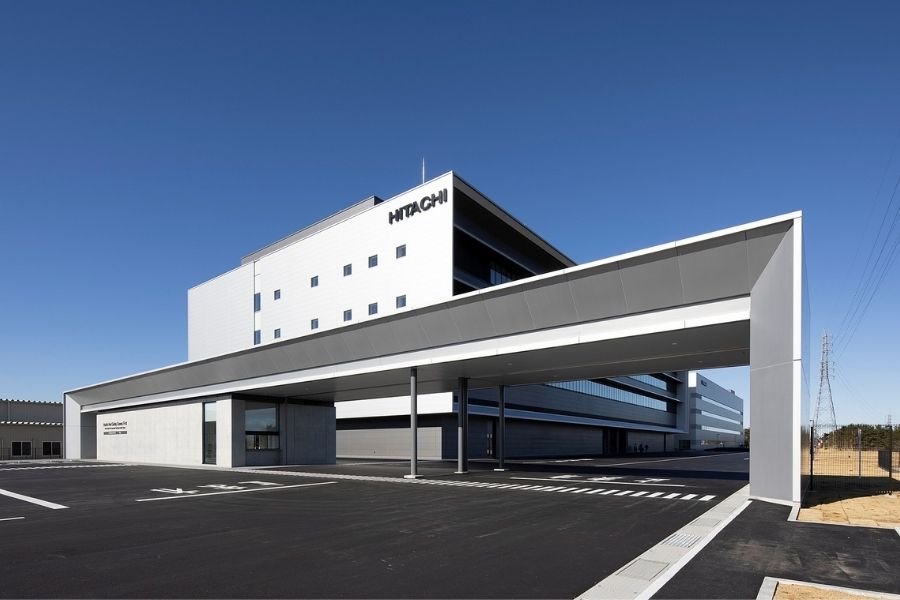
Marine Site, which achieved zero CO2 emissions via renewable energy
As corporations are also increasingly becoming required to take concrete measures to prevent global warming, Hitachi, Ltd. has set a goal of carbon neutrality toward making its plants and offices carbon net-zero by FY2030. Within the Hitachi Group, Hitachi High-Tech Group was the fastest company to have four offices achieve carbon neutrality.
Full-scale efforts began in FY2018 and culminated in the four locations of Hitachi High-Tech Kyushu, Hitachi High-Tech Fine Systems, Hitachi High-Tech Science Fuji Oyama Works, and Naka-Marine Site achieving carbon neutrality by March 2021. How did they do it? To find out, an interview was carried out with a Hitachi High-Tech Group employee.
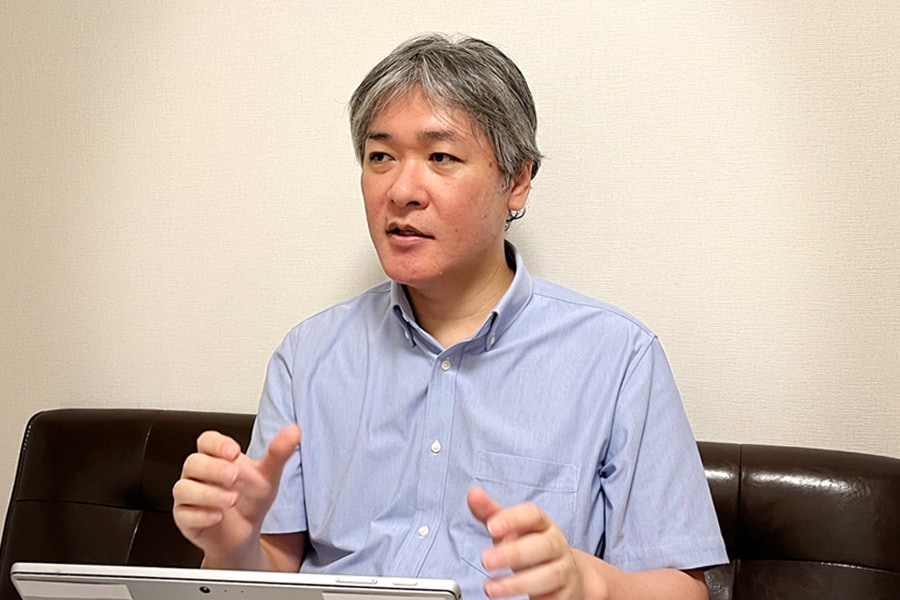
Akihiro Katakura of Hitachi High-Tech Group, interviewed online
In May 2020, Hitachi, Ltd. announced Hitachi Carbon Neutrality 2030, which asserts that CO2 emissions from Hitachi plants and offices will be net-zero by FY2030.
Akihiro Katakura, from the group’s Sustainability Management Department, which is at the forefront of this pledge, says that the four offices that attained carbon neutrality are garnering attention from both inside and outside the company.
Katakura says: “Hitachi High-Tech Group successfully cut CO2 emissions across these four locations by a total of 17,939 tons. I think this is a critical factor in demonstrating corporate value. I’ve recently been hearing people from the sales department say that they also want to showcase products and solutions that do not emit CO2.”
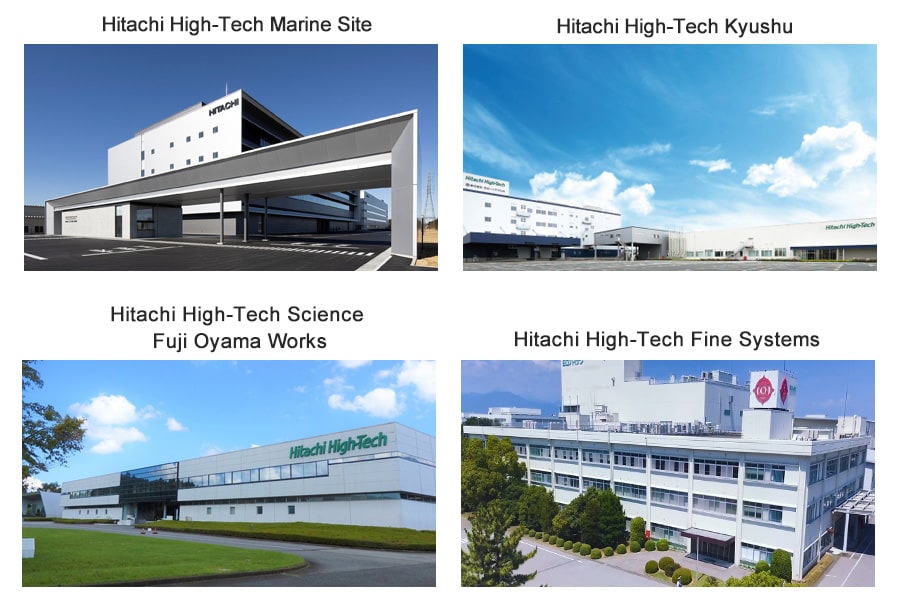
The four locations that achieved carbon neutrality
Construction of one of the locations, Marine Site, was completed in March 2021 in Hitachinaka City, Ibaraki Prefecture. It is a state-of-the-art plant that operates on 100% renewable energy.
Katakura says: “During the building review phase, senior management requested that ‘new plants emit zero CO2,’ so renewable energy was used from the time of construction, and no CO2 is emitted during production processes either.”
Following the lead of Marine Site, Hitachi High-Tech Kyushu switched to renewable energy to achieve carbon neutrality. The plant converted from power generation that uses fossil fuels to hydroelectric and geothermal power generation, along with installing solar panels to generate power from the sun. Additionally, the plant transitioned their company car fleet from gasoline cars to EVs.
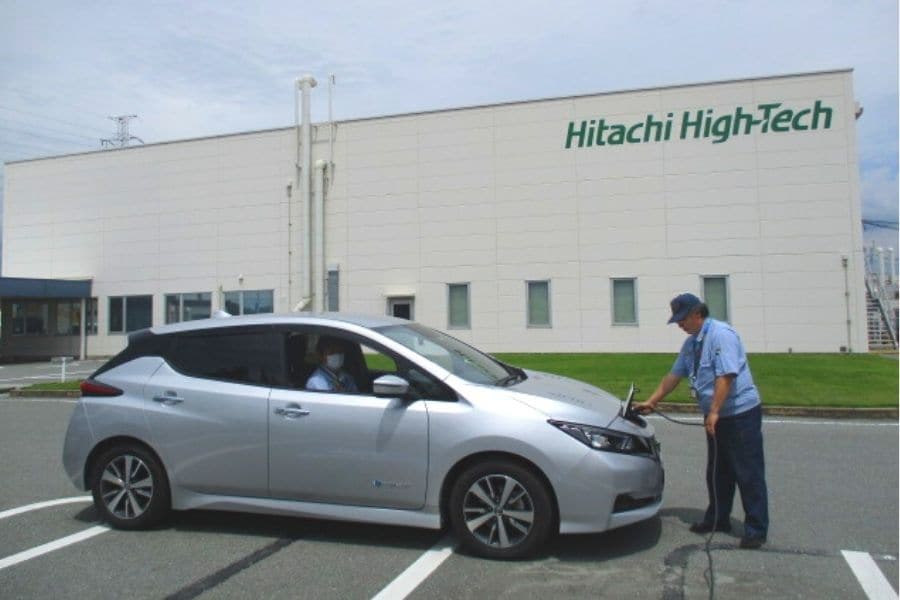
An EV used as a company car by Hitachi High-Tech Kyushu
Meanwhile, Hitachi High-Tech Fine Systems and Hitachi High-Tech Science Fuji Oyama Works use power that is certified to indicate that it is produced by renewable energy to achieve net carbon neutrality.
For some time now, Hitachi High-Tech Group has been investing in energy conservation and enacting a wide range of measures to cut CO2 emissions, including changing over to high-efficiency air conditioners and LED lighting, installing solar panels, and stopping temperatures inside buildings from rising, by using two roofs. However, these measures alone were not enough to achieve carbon neutrality, and Hitachi High-Tech needed to make further cuts in CO2 emissions.
It was during this time that a significant turning point occurred: the adoption of the Paris Agreement in December 2015. The Paris Agreement prescribes “holding the increase in the global average temperature to well below 2°C above pre-industrial levels and to pursue efforts to limit the temperature increase to 1.5°C above pre-industrial levels” as a global goal and contends that countries must limit CO2 emissions as much as possible.
Thus, Hitachi High-Tech Group, which was pressured by the need to cut CO2 emissions, increased their efforts via its Sustainability Management Department and Procurement Division leading these efforts by emphasizing to employees the importance of switching from power produced by oil and other fossil fuels to power derived from renewable energy, such as hydroelectric and solar power, which do not emit CO2.
Katakura says: “Although our team is comprised of eight employees, only three of us including myself were involved in formulating measures to achieve carbon neutrality, so it was a lot of hard work.”
While Katakura and his team started promoting the changeover to renewable energy, they soon hit a roadblock in their plans.
He says: “At first, the relevant employees didn’t agree with the plan of switching to renewable energy. They questioned the need for the switch at that time. The level of understanding within the company of environmental problems then was lower than it is now.”
Moreover, Katakura and his team had to work even harder to get the respective sites to make the change to renewable energy.
Katakura says: “Switching to renewables increases cost. I kept getting asked why we needed to make the change now. Even though I repeatedly explained the reasons why, the need for changing to renewables didn’t take hold.”
The idea that they came up with to get through to the employees was generating a simulation of power costs.
Katakura says: “The government was contemplating an increase in the environmental tax that is charged in accordance with CO2 emissions, and we highlighted that we might have to pay an enormous amount in power bills in the near future. Also, we forecast that power bills could swell to between 17 and 35 times that of FY2017 in the future.”
When Katakura explained this simulation at a meeting, senior management showed an interest in the importance of switching to renewable energy.
Katakura says: “By explaining that switching to renewables was the best way to hedge cost increase risks and that solving this important issue would improve corporate value, I could finally gain the understanding of senior management.”
“This was the moment that the roadblocks were swept aside,” reflects Katakura.
“I’m sure that a change in public mood worldwide played a part, but the direction that the wind was blowing completely changed thanks to senior management’s decisiveness and high recognition of carbon neutrality.”
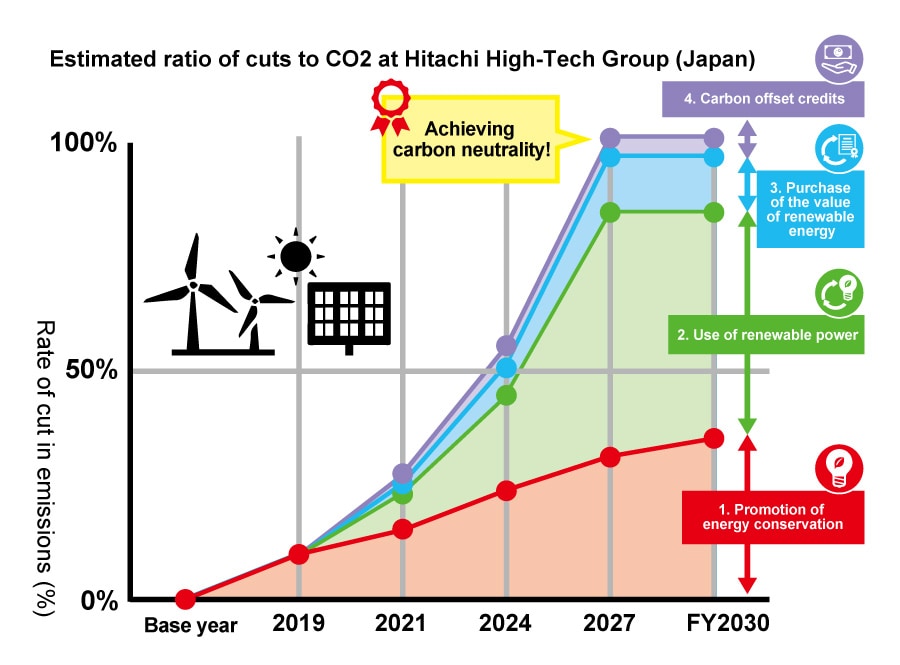
Hitachi High-Tech Group now has other companies asking them how they successfully cut CO2 emissions. Even though it looks like they might be on the cutting-edge of carbon neutrality, Katakura reckons that “we still have a mountain of issues to tackle.”
A number of work sites belonging to Hitachi High-Tech Group that emit a large amount of CO2 are located in the Naka district of Hitachinaka in Ibaraki Prefecture, and it is imperative that further energy conservation and a changeover to renewables occur.
Another challenge with going carbon neutral is the problem of tenants (rented office space). Katakura says: “We have to explain the merits of switching to renewable energy to the owner of the building that the tenant is in and to think about the best way to address the issue.”
Although there are still many other challenges to overcome, including for overseas subsidiaries to achieve carbon neutrality, Katakura is aiming to keep working hard to help plants and offices both in Japan and overseas achieve carbon neutrality.
Katakura wraps it up: “Moving forward, I’m going to continue to do my best to strive to achieve carbon neutrality across the entire Hitachi High-Tech Group.”